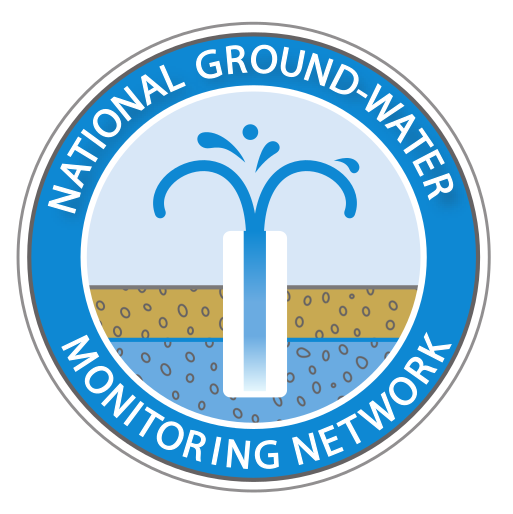North Carolina Department of Environmental Quality
Link to: North Carolina Department of Environmental Quality Groundwater Information
NGWMN Contact:
Mark Durway
(919) 707-9018
mark.durway@ncdenr.gov
The North Carolina Department of Environmental Quality, Department of Water Resources (NCDWR) is a water-level and water-quality data provider to the National Groundwater Monitoring Network (NGWMN). NCDWR has maintained a groundwater monitoring network since the mid-1960s and currently has well coverage in 66 of 100 counties. The NCDWR Network consists of 651 active wells, 624 of which are being served to the NGWMN Portal. NCDWR has been a part of the Network since 2016.
NCDWR provides water-level and water-quality data from the Surficial aquifer system, the Castle Hayne aquifer, the Northern Atlantic Coastal Plain aquifer system, Piedmont and Blue-Ridge carbonate-rock aquifers, and Piedmont and Blue-Ridge crystalline-rock aquifers.
NGWMN Projects:
Initial project to become a NGWMN data provider.
Project is for well drilling in the Northern Atlantic Coastal Plain. They will drill 2 nested wells with located along the NC/VA border and the NC/SC border. Seven trend wells will be drilled at the NC/VA site and 4 wells will be drilled at the NC/S site. Wells at 17 additional nested sites are being drilled as in-kind services for the project and will be added to the NGWMN also.
2019 Round 1: 7/15/2019 to 5/14/2022
Project is to drill additional wells to enhance the NGWMN. Two new well nests will be drilled for the area near the Virginia-North Carolina border to address interstate and coastal issues. Each well nest will consist of 4 wells completed in different major aquifers in the Northern Atlantic Coastal Plain.
2019 Round 2: 11/15/2019 to 11/14/2021
Project is to drill a new set of wells to fill a gap in the Network. There will be 4 wells screened in different major aquifers in the Northern Atlantic Coastal Plain.
2021 Round 1: 9/15/2021 to 9/14/2023
This project is to drill 3 new wells near the North Carolina-South Carolina boundary.
2021 Round 2: 11/1/2021 to 10/31/2023
This project is to perform persistent data services, upgrade their water-quality services, and replace continuous water-level monitoring equipment at 12 wells. The upgrade to their water-quality services will allow them to serve all water-quality data that they currently collect. Previous data was limited to pH, Specific Conductance, and Chloride data.
2023: 9/1/2023 to 8/31/2025
This project is to to provide persistent data services, improve water-quality web services, and replace 185 data loggers.
NGWMN Presentations:
December 2016 presentation to SOGW
Site Selection and Classification
Site Selection
The selection of monitoring well stations for the NGWMN took into consideration three primary factors: spatial distribution and density, length of service and reliability of data, and completeness of aquifer coverage. Typically, one well station was selected per county, which provided for a spatial density of approximately one well per 1000 square miles. Selected well stations were required to have a minimum of 5 years of consistent data with no known or apparent problems related to construction, screen setting, blockages, etc. Each well must have a dedicated data recorder (pressure transducer). Additionally, hydrographs from selected wells had to be effective in identifying short- and long-term trends and events (such as seasonal and long-term response to climate conditions, recharge and discharge, mining operations, irrigation, increased or decreased local and regional groundwater usage, pumping effects, change in chloride levels, etc). The final criterion for selection was that each station have wells in all principal aquifers present at that location, when possible.
Site Classification
Selected wells were assigned to one of three subnetworks: Background, Suspected Changes, or Documented Changes. Wells assigned to the "Background" subnetwork showed no evidence of anthropogenic impact to water level or water quality. Wells assigned to two other networks showed either suspected or clearly- defined water level or water quality changes which could be reasonably related to anthropogenic impact, the most common being the effect of pumping. Of the 85 wells added in 2016, subnetwork distribution is as follows: Background (59), Suspected Changes (8), Documented Changes (18). All wells were assigned to the Trend monitoring category since all selected wells are equipped with pressure transducers.
Data Collection Techniques
Water levels are recorded hourly by NCDWR using dedicated Onset Hobo, pressure tranducer-dataloggers. Field technicians download data from the recorders quarterly, make manual water level tape downs, and calibrate the recorders when necessary. Sixteen wells are also equipped with Solinst instrumentation to transmit water levels using cell phone telemetry.
Water quality data are collected from discrete depth intervals within the aquifer upon well completion and on a two to three year cycle thereafter. Water quality sampling is preceded by purging three well volumes or until field parameters stabilize using a YSI meter. Water quality data consist primarily of pH, salinity, specific conductance, and temperature using a YSI meter, and chloride using Quantab test kits.
Data Management
Prior to uploading water level and water quality data into NCDWR's portal, data are reviewed by key staff and approved by the Ground Water Monitoring Branch Program Manager. Data meeting quality standards are then uploaded to the appropriate database.
Security requirements are set by the Ground Water Monitoring Branch Program Manager and key staff are assigned varying levels of access to input or modify data or services based on program needs and other factors.
A Data Management Plan (DMP) for the project is available here.
Other Agency Information
Web sites of Interest
North Carolina Department of Environmental Quality- Water Resources
Ground Water Management Branch
Agency use of monitoring data
Central Coast Plain Capacity Use Area
Map water-levels in aquifers
Map freshwater-saltwater interface

